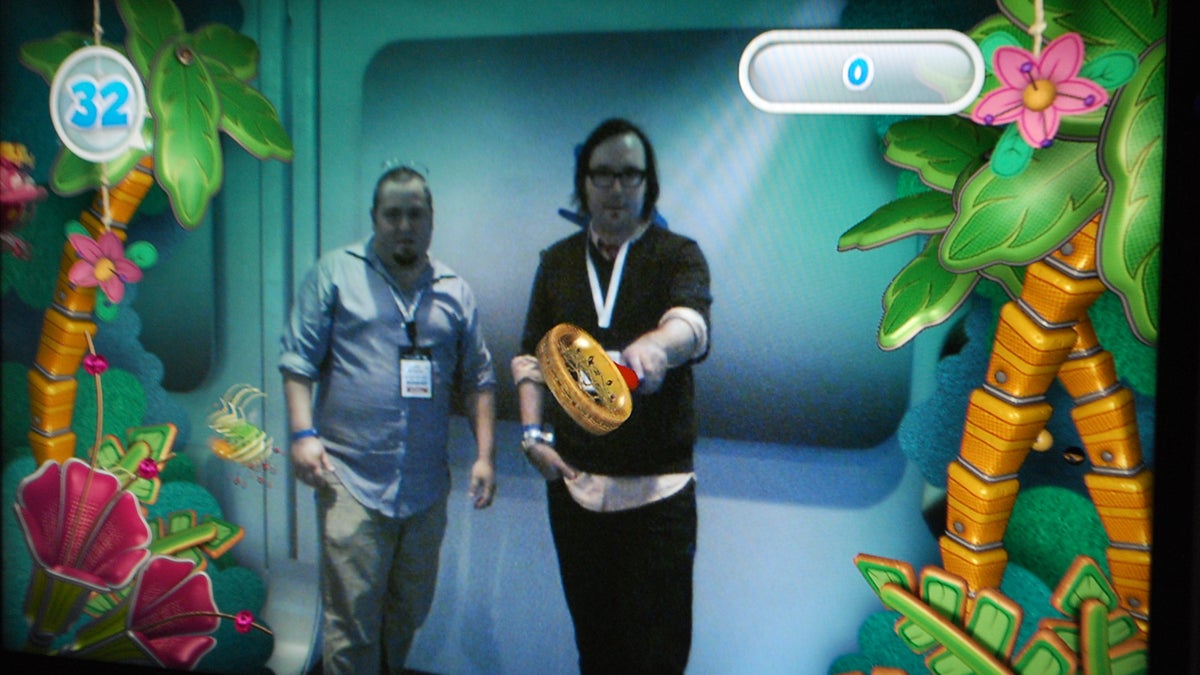Hands-on with the PlayStation Move
After trying out both the Microsoft Kinect and Nintendo 3DS, we got to test-drive the third big hardware product of E3 2010, Sony's PlayStation Move.

LOS ANGELES--After trying out both the Microsoft Kinect and Nintendo 3DS, we got to test-drive the third big hardware product of E3 2010, Sony's PlayStation Move. We've actually tried the Move before, at its original announcement during the Game Developers Conference earlier in 2010, but this was our chance to dive deeper into some of the launch games.
Of the three major motion-control peripherals for game consoles, the Wiimote, Kinect camera, and Move controller, it's Sony's device that looks the most garish. The black flashlight handle stick is topped with a ball that can change color, depending on its use in a particular game (the ball is actually soft to the touch, which always seems to surprise people), and it looks a lot more like game hardware than Nintendo's understated white controller or the Kinect's multimedia-looking Webcam.
Aside from that, we'd have to say that in terms of acting purely as a video game peripheral, the PlayStation Move is currently our favorite entry in the motion control competition. Kinect works well enough, but it's not always as responsive as you'd want, or at least that's how some of the games we tried felt. Plus, Kinect's opening game lineup is somewhat generic, with more proof-of-concept games than titles that would stand up without the Kinect tie-in. In fact, the Kinect's biggest strength has been largely unheralded--it's excellent ability to recognize and respond to voice commands, which is useful for home theater tasks.
Nintendo's Wiimote is physically closer to the PlayStation Move. It works well enough for games such as Wii Fit or for steering a platform game character around, but it still can't really translate a player's movements into one-to-one on-screen actions. Plus, playing a Wii game invariably involves a certain amount of waving the Wiimote around, trying to get the cursor back on the television screen.
The PlayStation Move hardware, on the other hand, always felt tightly connected to the screen and to us. There was still a tiny bit of lag, especially when performing fast-paced moves such as throwing a punch or swinging a golf club, but less exacting tasks felt delay-free.
We tried several games today, and the Move hardware worked well with each. Start the Party is a collection of minigames, many of which overlay the Move controller with an animated image (such as a tennis racket).
More interesting was The Fight, a bare-knuckle boxing game that uses two Move controllers--one for each fist. After calibrating the controllers, we were able to target different parts of our opponent's body by actually throwing correctly angled punches in real life. The control was close to simultaneous with our movements, but special moves, like throwing an elbow, still required a button press.
The most impressive demo was EyePet, a revamped version of a virtual pet game we got a look at last year. The original control scheme of holding up command cards to the PS3's Webcam in order to control the onscreen pet has been replaced with the Move controller, which can act as a toy, or be used to, say, shampoo and blow-dry your pet. It's not for adrenaline junkies, but the variety of activities available, and the integration of the pet and the Move controller, was impressive.
Interestingly, both EyePet and The Fight also work in 3D--but you'll need a 3DTV and compatible active-shutter 3D glasses for that, greatly increasing the financial outlay.
The question remains, however: Are consumers willing to shell out for extra hardware after they've already purchased a game console? Buying an entire new console system is one thing, but after-the-fact add-ons have traditionally been a tough sell. Are you ready to shell out for the PlayStation Move or Microsoft Kinect? Let us know your plans in the comments section below.

